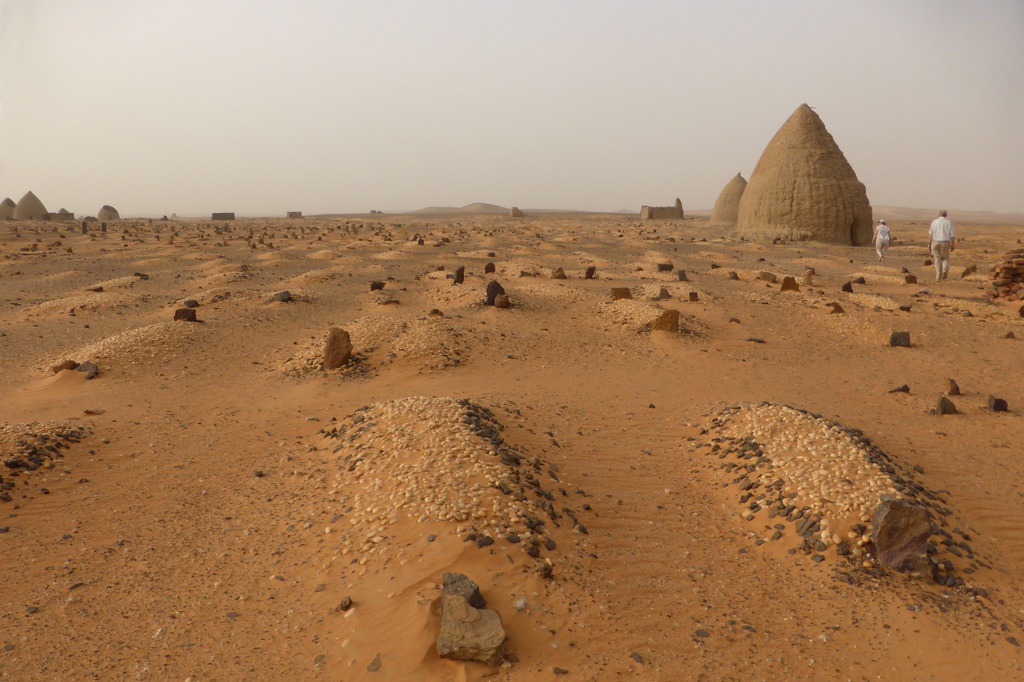Old Dongola was the capital of the Makurian state in medieval Nubia. It thrived as a political and commercial center from the 6th to the 14th century AD. The city is located on the east bank of the Nile River in what is now Sudan. It’s known for its unique archaeological remains, including churches, monasteries, and palaces. The site offers a glimpse into a civilization that managed to fuse indigenous African elements with Mediterranean influences.
Get your dose of History via Email
Historical Background of Old Dongola
Old Dongola’s discovery came through various archaeological expeditions. The Polish Centre of Mediterranean Archaeology University of Warsaw has been notably active since the 1960s. The city was originally a fortress but grew into a prosperous urban center. The Makurians built it, a Nubian Christian kingdom, around the 5th century AD.
Throughout its history, Old Dongola saw different inhabitants. After the decline of the Makurian state, it became a Muslim town in the 14th century. The city’s strategic location on the Nile made it a trading hub. It also witnessed significant events, such as the Baqt, a peace treaty with the Arab caliphate.
Old Dongola’s architecture reflects its historical significance. The city’s ruins include the remnants of a large cathedral. This cathedral was once the seat of the Coptic Orthodox Church in Nubia. The city also hosted other religious buildings, reflecting its role as a religious center.
Later, Old Dongola experienced decline and abandonment. This was due to changing trade routes and political shifts in the region. However, it remained an important archaeological site. It provides insights into Nubian civilization and its interactions with neighboring cultures.
Today, Old Dongola is a key site for understanding medieval Nubia. Its ruins offer a window into the past. They show how a powerful African kingdom maintained its identity while engaging with the Islamic world and Byzantine Empire.
About Old Dongola
Old Dongola’s ruins reveal a city with a complex layout. It had residential areas, public buildings, and religious sites. The city’s construction utilized local materials. These included mud bricks and sandstone. The architectural style combined Nubian and Byzantine elements.
The most prominent feature of Old Dongola is the remains of the cathedral. It had a cruciform plan and three naves. The cathedral’s columns and walls still display intricate frescoes. These frescoes depict religious figures and scenes, showcasing the artistry of the Makurians.
Besides the cathedral, Old Dongola had several other churches. Each had its own unique design and decoration. The city also had a large palace complex. This complex was likely the residence of the Makurian kings. It featured reception halls and administrative offices.
Archaeologists have also uncovered evidence of everyday life in Old Dongola. This includes pottery, tools, and personal items. These artifacts suggest a society that was both agricultural and engaged in long-distance trade.
The city’s fortifications were another key aspect. They protected Old Dongola from invasions. The walls and citadel were strategically placed to control access to the Nile. This allowed the city to thrive as a trade center.
Theories and Interpretations
Several theories exist about Old Dongola’s role and significance. Some suggest it was a religious center for the region. This is due to the concentration of churches and the large cathedral.
There are mysteries surrounding Old Dongola. For instance, the exact reasons for its decline are not fully understood. Some attribute it to environmental changes. Others point to economic and political factors.
Interpreting Old Dongola’s history requires matching archaeological findings with historical records. This includes texts from Arab travelers and European explorers. These records provide context for the artifacts and structures found at the site.
Dating Old Dongola’s ruins has involved various methods. Radiocarbon dating and stratigraphy have been key. These methods help establish a timeline for the city’s development and decline.
Theories about Old Dongola continue to evolve. New discoveries and research challenge old assumptions. They also enrich our understanding of this medieval Nubian city.
At a glance
Country: Sudan
Civilization: Makurian Kingdom
Age: 6th to 14th century AD
Conclusion and Sources
Reputable sources used in creating this article include:
- Wikipedia: https://en.wikipedia.org/wiki/Old_Dongola
- Britannica: https://www.britannica.com/place/Dongola
- World History Encyclopedia: https://www.worldhistory.org/Old_Dongola/

